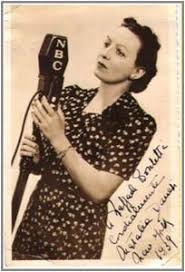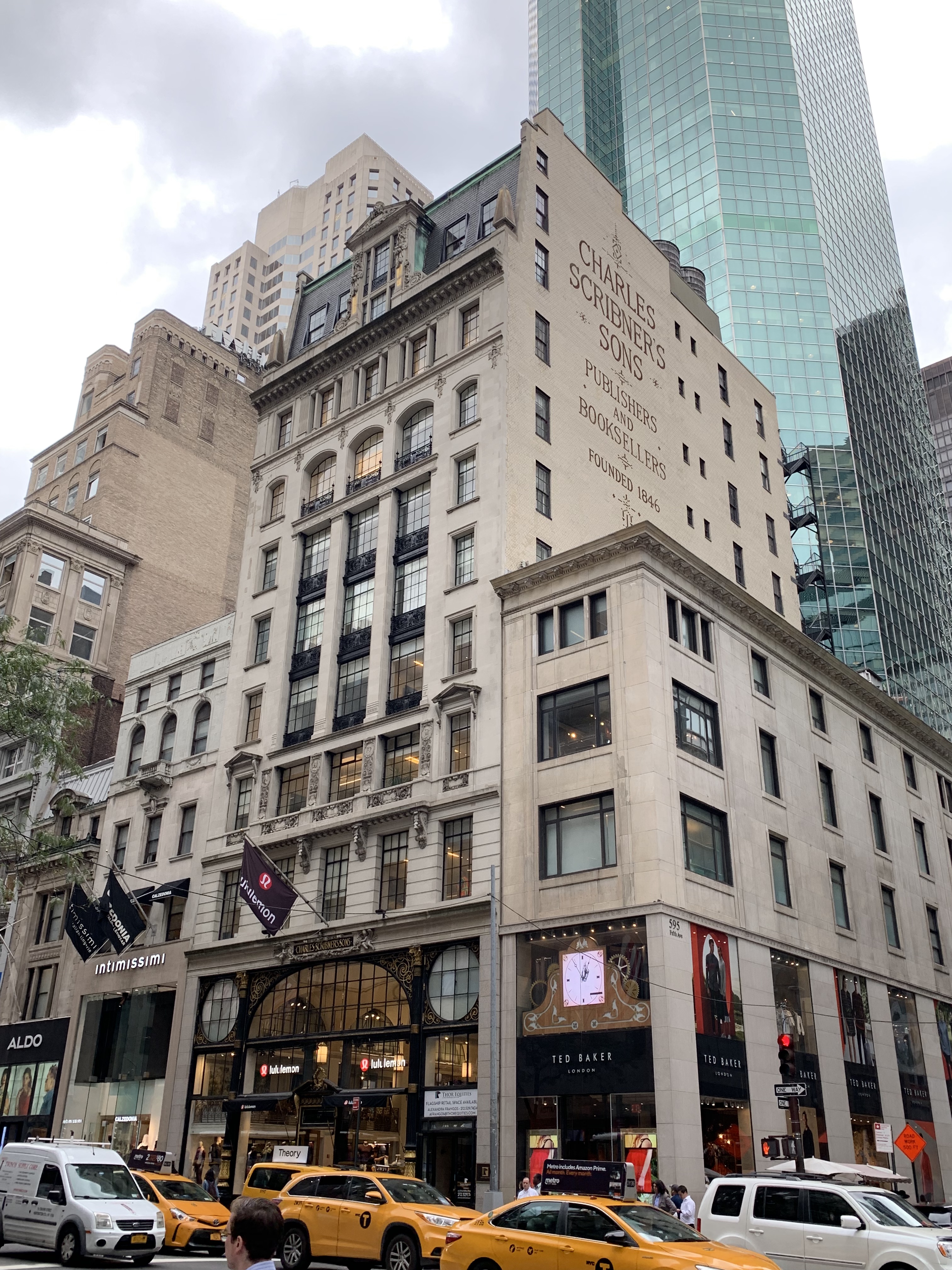1901-1994
Italy, France, United States
Arnoldo Mondadori Editore
Publishing house
Natalia Danesi left Rome and joined her fiancé William Murray in New York in the mid-1920s. In 1927 she obtained US citizenship. After getting divorced from Murray in 1929 Danesi decided to remain overseas. In spite of the distance, she maintained close contact with her homeland, where her mother lived. Following the outbreak of World War II, her mother joined her and Danesi started working for NBC and eventually became “the voice of Italian-American anti-fascism”, updating her Italians listeners about the progress of the war (Darlinghissima, p.4). In the 1940s, Danesi met Janet Flanner, acclaimed journalist for The New Yorker, with whom she began a lifelong relationship. At the dawn of the Liberation, Danesi returned to Europe as a member of the Women Army Corps. Well-known politicians and writers were often invited to the mess hall installed at Villa Blanc in Rome. Danesi thus met Bassani, Moravia, Leonor Finti, Carlo Levi, Luigi Barzini, as well as some members of the National Liberation Committee, including Alcide de Gasperi and Sandro Pertini, and the founders of the magazine Mercurio, edited by her “old friend” Alba de Céspedes. There, she also made contacts with the Italian press. When the war came to an end, Danesi was hired by Rufus Morey, cultural attaché in charge of the USIS. Upon her return to the United States in 1945, Danesi brought back two novels, Pratolini’s Cronache di poveri amanti and Moravia’s Agostino, in the hope that she could have them published in translation. Similarly, she hoped to arouse interest in a biography she would write about the House of Savoy, but this project was unsuccessful.
Danesi’s contacts with Joseph Burstyn, the largest distributor of foreign films in America, opened up new opportunities for the Italian cinema and were partly the reason for the debut and success of Roma - Città aperta (1945), one of Italy’s first neorealist films. Moreover, the movie legitimized the leading actress Anna Magnani as an international star.
Pursuing her dream of a career in journalism, Danesi wrote articles for Mademoiselle, Harper’s Bazaar and Flair. As she did not achieve the success she had hoped for, during one of her visits to Italy she decided to meet the publisher Mondadori, whom she had already worked with in the past. She thus obtained an important position in New York as head of Mondadori’s first representative office abroad. She took up her post in the summer of 1951, and she started by consolidating the relationships between the authors and the publisher, as well as securing new writers. Mondadori urged her to concentrate her efforts on gathering information about the most successful American magazines and their production processes, so that the company could emulate them. Nevertheless, not only did Danesi bring the American model and culture to Italy, but she also devoted great energy to spreading Italian culture overseas. She facilitated transatlantic exchanges, obtaining publication rights of foreign authors for Italy and promoting Italian authors on the American market, including Alba de Céspedes, Vasco Pratolini, Alfonso Gatto and Vittorio Sereni. In addition, she kept contacts with publishers, libraries, and with the Italian sections of American schools and universities, and she centralized all activities related to the sale of translation rights for the United States in her New York office. Gradually, the studio at 155 Fifth Avenue became a sort of “cultural bureau” (Darlinghissima, p. 192), and Danesi took over additional responsibilities. For example, she helped Magnani during her stays in the USA, she was in charge of the actress’s press interview for Luchino Visconti’s film Bellissima (1951), and in 1954 she accompanied her during the filming of Tennessee Williams’s The Rose Tattoo (1955), leaving the office in the care of her son Bill Murray for three months.
In 1964 Danesi welcomed Giorgio, Arnoldo Mondadori’s son, the editor-in-chief of Epoca Nando Sampietro, the contributor Gianfranco Cantini, and Giuseppe Ungaretti to New York on the occasion of the World’s Fair, to which Epoca dedicated a special issue. The party was also received by President Johnson at the White House, in the presence of the Italian ambassador Sergio Fenoaltea.
In 1966, while Giorgio was gradually taking over his father’s business, Danesi accepted Andrea Rizzoli’s offer to be the new vice-president of Rizzoli Corporation in New York. At Rizzoli, Danesi took charge of the organization of events dedicated to Italian culture organized in the Gallery of the bookstore and she managed over 40 employees. She became Oriana Fallaci’s agent, she welcomed guests and artists and curated art exhibitions.
In Darlinghissima Danesi acknowledges that from 1951 to the late 1970s her work contributed to the building of a cultural bridge between Italy and the United States, first as head of the Mondadori office, then as vice-president for Rizzoli.
Related Vectors
Arnoldo Mondadori Editore
Publishing house
Giuseppe Ungaretti
Poet, Writer, Translator
Alba de Céspedes
Writer, poet
Marguerite Chapin Caetani
Editor, cultural promoter, patron of arts
Rizzoli
Publishing House and Movie producer
Sources
AME Historical Archive, fasc. Natalia Danesi Murray. Arnoldo and Alberto Mondadori Foundation (FAAM), Milan.
Antonello, Anna. “Una principessa editrice e un editore distributore per Botteghe Oscure.” The Italianist, vol. 35, no. 1 (February 2015): 139–156.
Arnoldo Mondadori Editore. Album Mondadori 1907-2007. Milan: Arnoldo Mondadori Editore, 2007.
Flanner, Janet. Darlinghissima: Letters to a Friend. Edited and with Commentary by Natalia Danesi Murray. New York : Random House, 1985.
Harris, Jessica L. Italian Women’s Experiences with American Consumer Culture, 1945-1975. The Italian Mrs. Consumer. New York: Palgrave Macmillan, 2020.
Mulinaro, Ursule et al. eds. Chelsea, no. 8 (Oct. 1960): 1–154. https://jstor.org/stable/community.28034870
Mulinaro, Ursule et al. eds. Chelsea, no. 9 (Mar. 1961): 1–110. https://jstor.org/stable/community.28034871
Mulinaro, Ursule et al. eds. Chelsea, no. 10 (Sept. 1961): 1–158. https://jstor.org/stable/community.28034872
Murray, William. Janet, My Mother, and Me: A Memoir of Growing Up with Janet Flanner and Natalia Danesi Murray. New York: Simon & Schuster, 2000.
Picano, Felice. Nights at Rizzoli. New York and London: OR Books, 2015.



